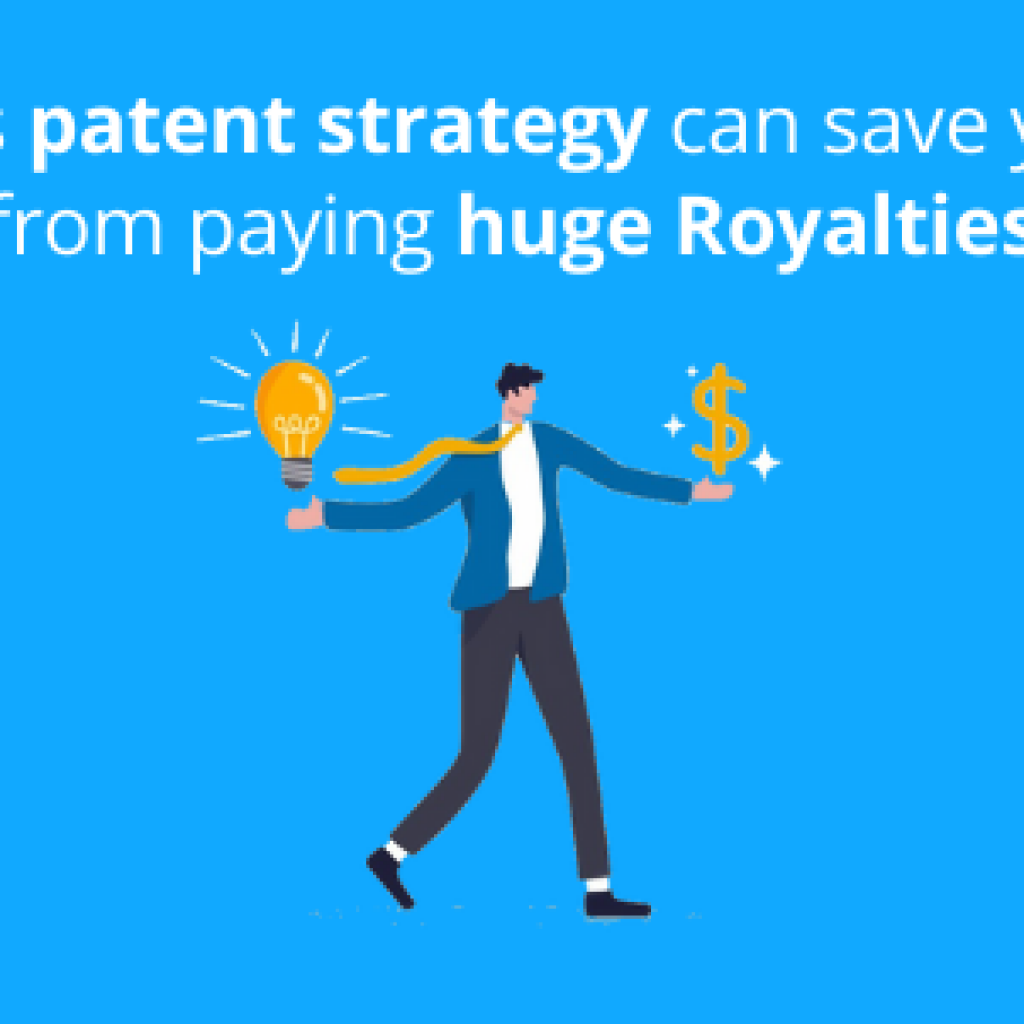There is a lot of buzz about the upcoming global recession. If we see history, patent licensing and litigation flourish during this time. But, it is pretty obvious that if you’re filing patents, you should have a well-thought and strength-checked IP strategy. Companies, however, often fail to see the impact their IP assets can have on their core business. We recently invited Tom Franklin to shed more light on the topic.
‘I’ve seen a few business cycles in my career, the.com boom and bust, the Great Recession in 2008, etc. What I found is that most companies may shed a lot of things that they do and refocus. Production and engineering are the heart of their business. So when they refocus, it’s rarely away from developing a new product. They may fold back in certain directions they wanted to explore and put those on ice for a little while as they double down on their core business, and it’s rare that they would cut back on patents.’
– Thomas Franklin (Tom), founder of TriangleIP

Tom Franklin is the founder of TriangleIP and Partner at Kilpatrick Townsend & Stockton. He’s a recognized Colorado “Super Lawyer” for intellectual property for the eighth consecutive year now. In 2020, Law Week Colorado selected him for its “Barrister’s Best” list as the “People’s Choice” for Best IP Non-Litigator.
‘A patent strategy that aligns with the company’s core business can pay off immensely. Thus, businesses need to have clear goals with their patents.’ says Tom.
Check out our conversation with him on building a recession resistant IP strategy for 2023.
Overview: Strengthening your patent portfolio
Whether it is to protect your innovation, to have a competitive advantage, or to increase your revenue, a clear strategy saves you from a lot of wasted efforts and resources.
A lot of companies, even the big ones, don’t have this clarity about their IP assets, and a lot of times they are directionless about their portfolios or the underlying IP strategy.
These companies often struggle with a lot of questions related to their IP budget, their good/bad patents, what their competitors are doing, and how they can use their patents to stay ahead of them. Tom has 30 years of experience in providing thousands of such companies with the right strategy to manage and use their patent portfolio.
During our conversation, Tom explains why companies should think about strengthening their patent portfolio to grow their business. Additionally, he talks about his approach to managing a patent portfolio.
Key Takeaways
Below are a few lessons Tom shares throughout the interview. Using these, portfolio managers can learn to unlock the full potential of their company’s IP assets in today’s changing times:
- Strengthen your core business and its strategic vision during an economic downturn.
- Align your IP strategy with your business strategy and have a clear understanding of your portfolio to bring out more value from your patents.
- Spot litigation threats and opportunities using landscape and prepare beforehand.
- Analyze your portfolio and decide on the upcoming budget accordingly.
- Make all the analysis handy so you can keep a track of all the knowledge to make strategic decisions and prepare for anything, from expansion, defensive strategy, and acquisitions, to even strategic product launches.
- Use tools and systems to achieve cost-effective management of the portfolio rather than relying on Excel sheets and emails to store information.
Highlights from the conversation
Short on time? Here are highlights from this interview between Dhruva and Tom.
1:46- What is one piece of advice for companies in the upcoming recession?
Production and engineering are the heart of many businesses. These times force companies to look at their core business and its strategic vision. Companies should double down on their Core Business and benchmark their technology in the market. So, it’s rare that they would cut back on patents.
A company will ideally cut back on production and engineering because of financial strains. In this situation, another company jumps in. In past recessions, we saw companies acquire other companies to catch up on the missed innovation that happened during that recession.
4:47- If you’re an SME, how do you know if your patent portfolio is on track and how to make it cost-effective?
Thinking smartly about which areas/technology you have enough patents in, comparing it with the entire portfolio and your strategic vision, can help you see if your portfolio is on track. If it’s not, you can use this analysis to decide which areas to focus investments in and where to cut back.
As an SME, you can accordingly decide to buy more patents or abandon the ones that don’t align with your core business strategy. Knowing this also helps their pruning strategy.
Like, for the patents that don’t line up with the industry, or areas where your business is focusing, licensing or selling that part of the portfolio can also be useful.
You can always look at your patent portfolios and set metrics that reflect value for you. But all these things are complex and time intensive. To make it cost-effective, you can hire a firm to look at your portfolio so you can further analyze your market or competitors with landscape analysis and compare your portfolio. This will show you your strong areas, and the areas you’re lacking behind.
14:44- How should companies with small portfolios prepare for the increasing litigation trends during this time?
Litigations are not really a surprise. You can see them coming based on where you are in the market, or what tech areas you’re working on.
Landscape research can help you spot threats and opportunities in advance. It gives you the upper hand. Perhaps your competitor or someone else is infringing on your high-value assets, you can go after them for licensing revenue, or you can acquire them.
Often, patent litigations in these times are for specific purposes. Sometimes simply to get access to more customers, or team up with competitors.
Countersuing is another strategy that you can opt for. Even if you have very few patents. You can build a good litigation strategy and push incoming litigation into a cross-license or collaboration. Sometimes you can even turn the tide.
Having clarity about your portfolio is the way to go. That should be a must for any IP head.
23:13- How can IP heads use all these strategies and set up their budget in 2023?
Often, the management pushes the IP budgets down. But if you’re not consciously planning these budget alignments and cuts, you risk losing crucial investment opportunities.
Because only when the company gets sued will the management care that they had a lifesaving patent that is no longer available. And they’ll see it’s because you just saved money by dropping the patent that would have been ideal for the countersuit.
Knowing your high-value patents can keep you prepared for litigation or economic downtime. It makes your decision-making process easier and risk-free. Plus, consulting a 3rd party reflects that you did good due diligence. The good thing about these studies is, if you abandon one bad patent, the project has already paid for itself. And if you abandon a patent with zero value, it would pay off incredibly.
26:26- How can IP leaders watch over any other risks when preparing their IP strategy in 2023?
I have clients who often want to know which patents are likely to be asserted.
It’s great that today we have the capability to get that intelligence by looking at patent data and industry activities. This could be one strategy to prepare for any other upcoming threats that you might not see directly.
Most companies have only limited patents, which they actively assert. Knowing which are those patents in your market can help you prepare beforehand. It is extremely useful in case of product launches.
But when there’s a pressure of cutting costs, your judgment could get cloudy. Hence, an Ideal approach is making these studies a standard practice in your organization. You can easily keep track of it using a platform.
35:00- What are the advantages of having a platform with all the information about your portfolio?
A lot of companies get caught up in filing and filing and not-strategizing mode.
Having an up-to-date portal that is built based on what is important for you can be a great asset in these times. Different departments of your organization can manage it together. It can be an impressive arsenal and intelligence to prepare for anything, be it expansion, acquisitions, defensive strategy, or even strategic product launches.
If you have the data in the tool, you can connect different dots, look at it from different perspectives and get all the answers right from the platform.
Looking for a tool that can do all the above and more for you? Check out Slate.
Tom further explains how patent offices have a language that doesn’t match what happens in the industries or the jargon that your company might be using.
Even the automated tools are reliant on the structure that patent offices use just to manage their own work. Thus, hiring people who have access to this language and other tools, and can hand tweak the search strings, do spot checks, understand the language that your enterprise uses, and align it with patent data is the best approach to building an effective IP strategy.
Working on an IP strategy for 2023? Get in touch with us to evaluate your patent portfolio.
Authored By: Nidhi, Marketing












